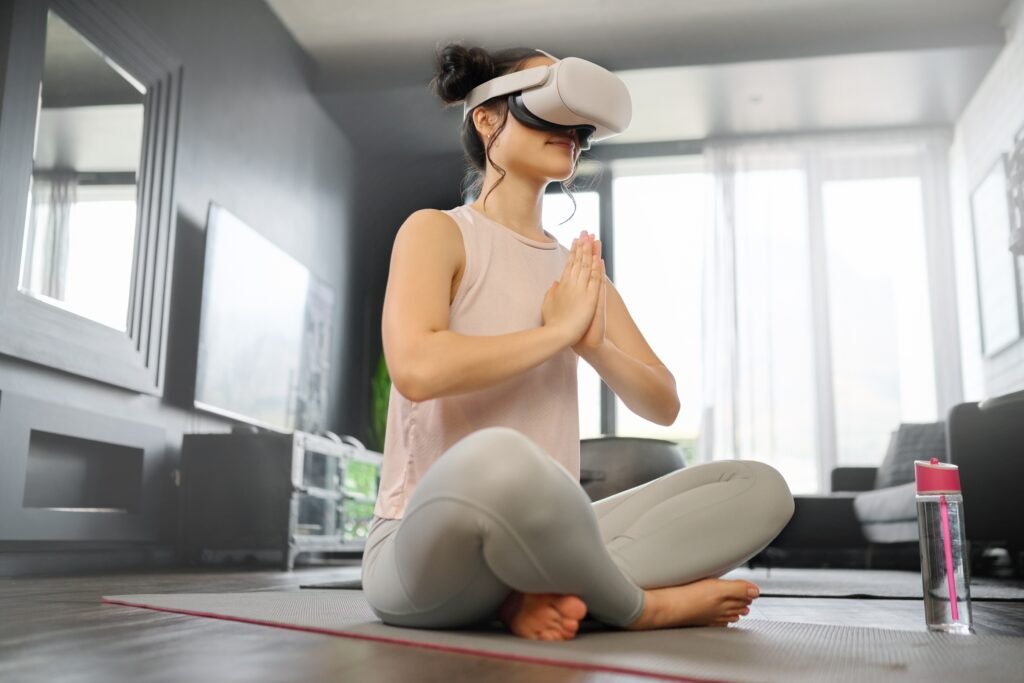Inhale. Exhale. Click. Buffer. Namaste?
Welcome to the era of tech-enhanced and digitalized yoga—where mindfulness meets microchips, and your downward dog might just be corrected by an AI named Flexa.
Traditional yoga purists, brace yourselves. Because whether you like it or not, the digital age has unrolled itself onto the mat, and your om has gone online.
📿 Traditional Yoga: Ancient, Authentic… Sometimes Sweaty
Let’s start with the OG. Traditional yoga, the kind you do in a candle-lit studio with incense and soft flutes whispering in the background. You’re guided by a human—often barefoot, occasionally vegan—and you can feel the shared energy of every breath and stretch.
✅ Pros of Traditional Yoga:
- Human Connection: Nothing beats a real-life teacher adjusting your spine mid-Cobra.
- Tangible Vibes: Group energy and studio ambiance can’t be downloaded.
- Accountability: You paid for the class. You showed up. You will finish that Warrior II.
❌ Cons of Traditional Yoga:
- Scheduling Drama: 7 a.m. on a Sunday? Hard pass.
- Commute + Parking = Stress: Which is exactly what you’re trying to get rid of.
- It Ain’t Cheap: Boutique studios cost more than some car payments.
🤖 Digital Yoga: Stream, Pose, Repeat
Enter the age of digitalized yoga, where your teacher lives inside your screen and your living room becomes a sacred studio (right next to your laundry pile).
Whether it’s YouTube, Zoom, or a VR headset that puts you on a beach in Bali—tech-enhanced yoga is booming. There are apps with AI posture correction, smart mats with pressure sensors, and even wearables that whisper “breathe deeper” mid-vinyasa.
✅ Pros of Digital Yoga:
- Flexibility (Literal & Figurative): On-demand yoga at 2 a.m. in pajamas? Done.
- Affordability: Many digital yoga platforms cost less than a smoothie.
- Personalized Data: Track your breath, posture, stress levels… even your karma (okay, maybe not yet).
❌ Cons of Digital Yoga:
- Isolation: Talking to your iPad doesn’t quite build sangha (community).
- Distractions: Kids. Dogs. Doorbells. That unfinished burrito on the table.
- Tech Glitches: Nothing ruins Zen like “Your session has frozen.”
🧘♀️ So… Which Is Better?
Here’s the truth: Neither is better. Both are brilliant in their own ways.
Traditional yoga gives you the soulful, sweat-soaked lineage that’s been passed down for centuries. Digital yoga offers convenience, accessibility, and an option for anyone with Wi-Fi and a yoga mat (or a towel… or a rug… let’s be real).
Think of it like chai vs. matcha lattes. Different flavors. Same inner glow.
🔍 Where SEO Meets Savasana (a.k.a. Why This Matters)
In the grand scheme of wellness, the rise of tech-powered yoga is more than a trend. It’s a response to modern life. Busy schedules, limited access, and post-pandemic habits have made online yoga classes, AI yoga apps, and virtual instructors not just convenient—but essential.
People are searching Google for:
- “Best yoga apps for beginners”
- “AI posture correction yoga”
- “Can I do yoga on my phone?”
And yes, we’re here to answer: Yes, yes, and absolutely yes—just not in traffic.
🌐 Future Forecast: Hybrid Is the New Hatha
Expect the future of yoga to blend both worlds. Studios will offer hybrid models—in-person and streamed. Apps will get smarter. Your smartwatch might start suggesting breathwork when your emails spike.
And you? You’ll get to decide whether you want a teacher who smells like patchouli… or a robot that doesn’t judge your wobbly Tree Pose.
Final Thoughts: From Om to Online
Technology isn’t killing yoga—it’s stretching it. Expanding its reach. Making it accessible to people who’d never dare walk into a Lululemon-filled studio.
So whether you’re bowing in a packed class or on your carpet with a YouTube guru named “Yoga Steve,” just remember: Yoga isn’t about location or tech. It’s about showing up—for yourself.
Now go ahead. Take a deep breath. Open the app. And hit “Play.”
Namaste, digitally.






Leave a Reply